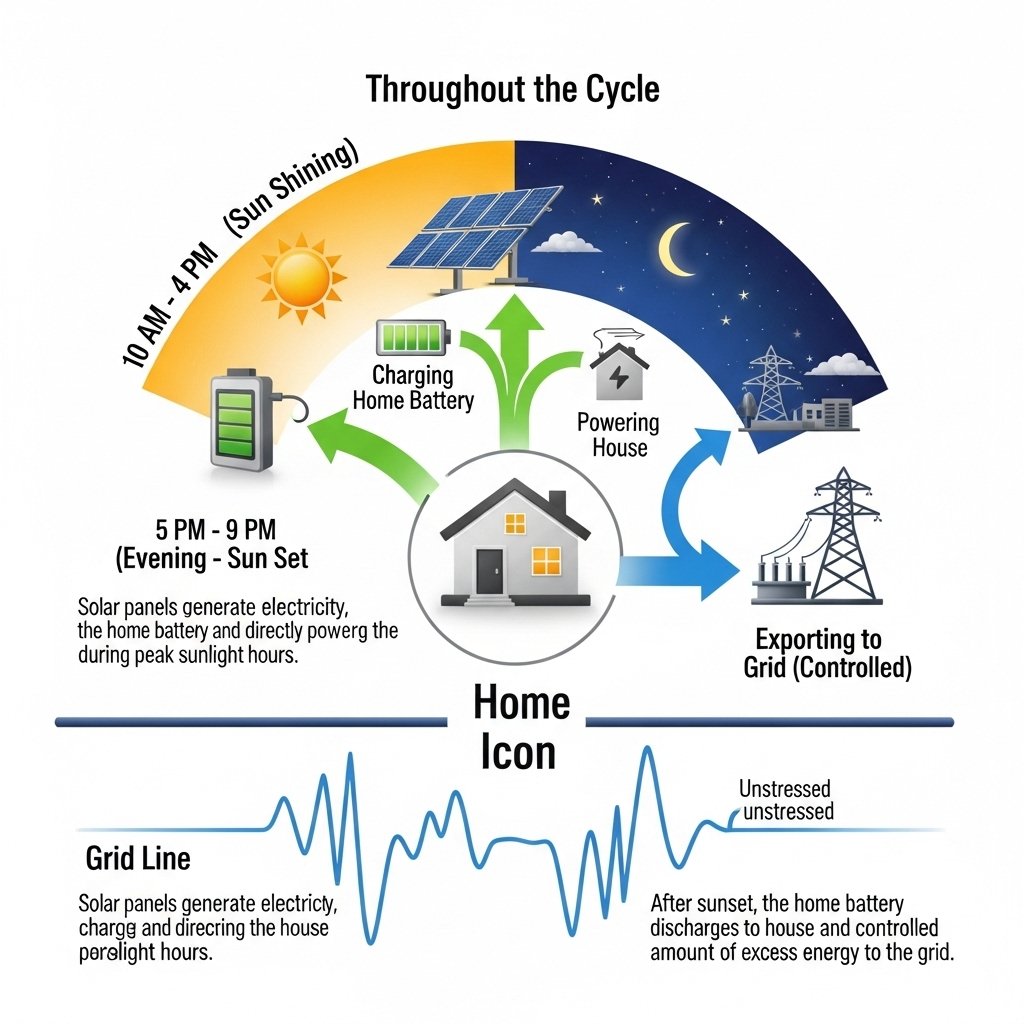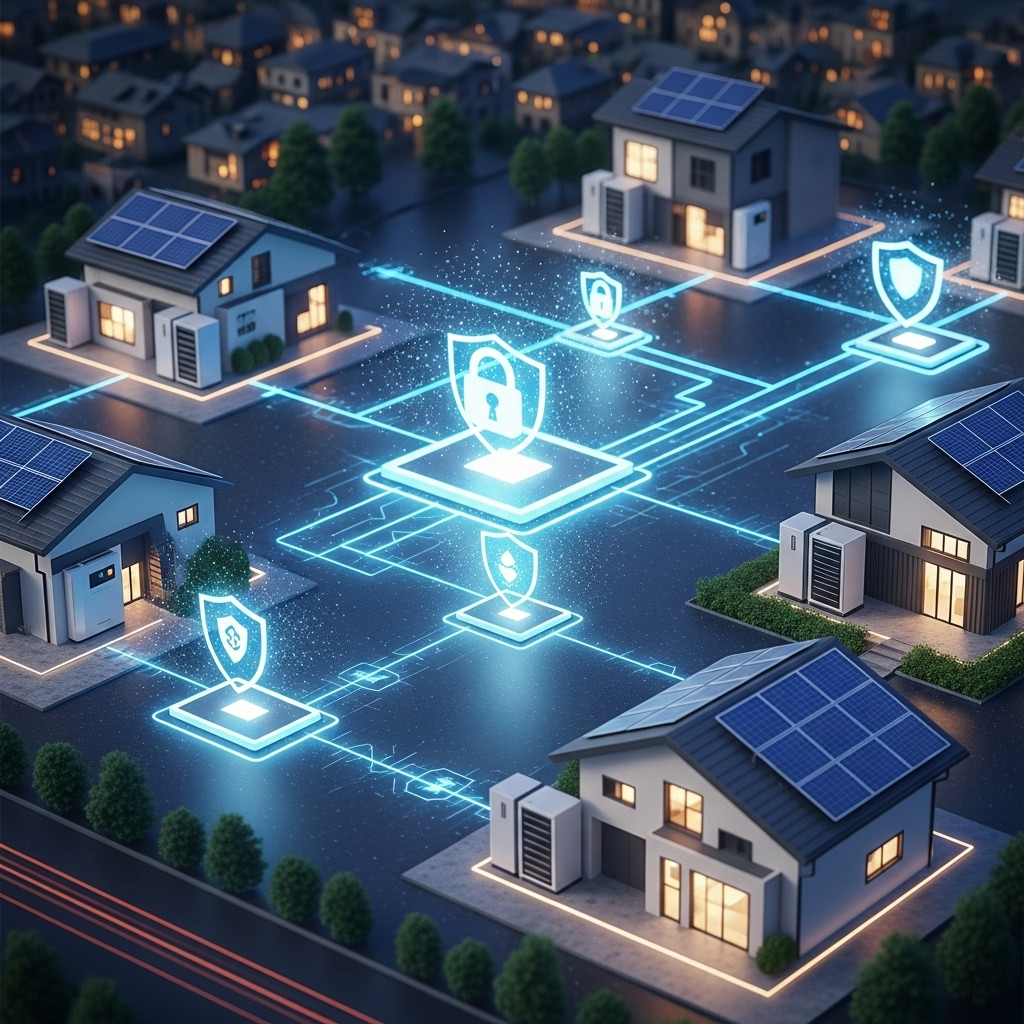Connecting a new solar PV project to the grid can be a complex and costly process. For years, developers and homeowners have faced the possibility of expensive, time-consuming grid upgrades to accommodate their systems. However, the adoption of smart inverter regulations is changing this landscape. These rules leverage advanced technology to make the grid more flexible. This analysis examines whether these regulations genuinely reduce the need for physical grid upgrades, saving project owners time and money.
Understanding the Grid Connection Challenge
The electric grid was originally designed for a one-way flow of power from large, centralized power plants to consumers. The rise of distributed energy resources (DERs), like rooftop solar, reverses this flow, creating technical hurdles that utilities must manage.
The Problem of Voltage and Frequency Instability
When many solar systems in one area feed power into the grid simultaneously, they can cause localized voltage to rise above acceptable limits. This can affect power quality for all connected customers and potentially damage sensitive equipment. As the International Energy Agency (IEA) notes in its research, a key challenge is ensuring that variable renewable energy plants do not negatively impact the local quality and reliability of electricity supply. These technical grid connection rules are critical for stable operation.
Traditional Solution: Costly Physical Upgrades
Historically, the primary solution to grid instability from new solar projects was to upgrade the physical infrastructure. This could involve replacing local transformers, installing larger-capacity wires (reconductoring), or adding voltage regulation equipment. These upgrades are expensive and can introduce significant delays. According to a report on Getting Wind and Solar onto the Grid, this situation can create a 'first-mover disadvantage,' where the first project in an area bears the full cost of an upgrade, potentially stalling smaller projects altogether.
What Are Smart Inverters and How Do They Help?
Smart inverters represent a significant technological leap from their traditional counterparts. They are equipped with intelligent software that allows them to do much more than simply convert DC power to AC power. They become active participants in maintaining grid health.
Beyond Simple Power Conversion
A smart inverter is a power electronics device with a two-way communication capability and advanced software functions. These functions allow it to autonomously sense grid conditions and provide support. Key capabilities include:
- Volt-VAR Control: Automatically adjusts reactive power to help stabilize local voltage levels.
- Volt-Watt Control: Reduces real power output slightly if voltage exceeds a certain threshold, preventing over-voltage conditions.
- Frequency-Watt Control: Adjusts power output in response to grid frequency deviations, helping to balance the broader power system.
- Ride-Through Capability: Remains connected and operational during minor grid disturbances, preventing mass disconnections of solar systems that could destabilize the grid.
Actively Supporting the Grid
These functions turn a potential problem into a solution. Instead of being a passive source of power that can cause instability, a PV system with a smart inverter becomes a dynamic asset. The IEA's System Integration of Renewables report highlights that the software-controlled nature of modern PV plants is an opportunity. It allows for a broad range of configurable responses to grid disturbances, which is precisely what smart inverter rules codify and enforce.
The Real-World Impact of Smart Inverter Regulations
Mandating these capabilities has a direct and positive effect on the interconnection process for new PV projects. It streamlines approvals and, in many cases, reduces the need for expensive hardware changes.
Streamlining the Interconnection Process
Utilities use screening processes to evaluate the potential impact of a new solar project. A project with a standard inverter might fail an initial screen due to potential voltage impacts, triggering a long and expensive full interconnection study. A project with a compliant smart inverter, however, has built-in mitigation capabilities. This often allows it to pass the initial screen, leading to a faster and cheaper approval process.
Deferring or Avoiding Infrastructure Upgrades
This is the most significant financial benefit. By actively managing voltage and other grid parameters at the source, smart inverters can prevent the issues that would otherwise necessitate an upgrade. A project that might have been quoted tens of thousands of dollars for a new transformer could now be approved with specific smart inverter settings. This makes solar economically viable for more customers and developers.
| Feature | Standard Inverter Scenario | Smart Inverter Scenario |
|---|---|---|
| Initial Grid Impact Assessment | Flags high potential for voltage rise. | Mitigates voltage rise with Volt-VAR function. |
| Required Study | Full, costly interconnection study required. | Expedited review or passes initial screen. |
| Grid Upgrade Requirement | Likely requires transformer upgrade or line reconductoring. | Upgrade often deferred or avoided entirely. |
| Project Timeline | 6-12 months delay for study and upgrades. | Minimal delay, faster approval. |
| Associated Costs | $20,000 - $100,000+ for upgrades. | Minimal incremental cost for the smart inverter itself. |
The Limits of Smart Inverters
Smart inverters are a powerful tool, but they are not a cure-all. On circuits that are already heavily saturated with solar generation or have fundamentally undersized and outdated infrastructure, physical upgrades may still be unavoidable. The effectiveness of a smart inverter depends on the specific local grid conditions. They are most effective at managing localized issues but cannot solve systemic capacity shortfalls.
Maximizing Benefits with the Right System Design
To get the most out of smart inverter rules, you need to think about the entire energy system, not just the inverter itself. Strategic system design can enhance grid-support functions and deliver more value.
The Role of Energy Storage
Pairing a smart inverter with a battery energy storage system (ESS) is a game-changer. For example, if the Volt-Watt function needs to curtail power to protect the grid, that excess energy doesn't have to be wasted. Instead of being lost, it can be redirected to charge the battery. This stored energy can then be used later in the evening, maximizing self-consumption and providing backup power. This synergy creates a more resilient and efficient system for both the owner and the grid.
Choosing High-Performance Components
The reliability of your system hinges on the quality of its components. A high-performance lithium battery and a dependable hybrid inverter are crucial for achieving the desired outcomes. Understanding the technical specifications of your equipment is vital. For instance, metrics like round-trip efficiency and depth of discharge directly impact your system's lifetime value. A detailed breakdown of these factors can provide clarity on what to look for, as explained in this ultimate reference for solar storage performance. Investing in quality components ensures your system can effectively execute the commands required by smart inverter rules for years to come.
A Look Ahead: The Evolving Grid
Smart inverter rules are a significant step toward a modern, flexible, and resilient grid. They effectively reduce the frequency and scope of costly upgrades for many PV projects, lowering a major barrier to solar adoption. While they do not eliminate the need for upgrades in every case, they provide a sophisticated software-based solution that makes grid integration smoother and more affordable. This shift helps transform the grid from a one-way street into a dynamic, multi-directional network ready for a renewable energy future.
Disclaimer: This article is for informational purposes only. It does not constitute financial or legal advice. Consult with a qualified professional and your local utility before making any investment decisions or system modifications.
Frequently Asked Questions
What is a smart inverter?
A smart inverter converts DC electricity from solar panels to AC electricity for your home and the grid. Unlike older models, it includes advanced software to actively help stabilize the grid by managing parameters like voltage and frequency.
Do all new solar projects require a smart inverter?
This depends on local utility and state regulations. Many jurisdictions now mandate smart inverters for all new grid-tied solar installations to better manage the growing number of renewable energy sources and maintain grid stability.
Can a smart inverter completely replace the need for a grid upgrade?
Not always. Smart inverters can often defer or avoid upgrades for many projects by managing local grid issues at the source. However, on circuits that are already heavily loaded or have severely outdated infrastructure, physical upgrades may still be necessary to ensure safety and reliability.
How does adding a battery improve the function of a smart inverter?
A battery allows the system to store excess solar power instead of just curtailing it (reducing output) when the grid is stressed. This means you avoid wasting valuable energy, and you can use that stored power later, increasing your energy independence and overall system efficiency.





Leave a comment
All comments are moderated before being published.
This site is protected by hCaptcha and the hCaptcha Privacy Policy and Terms of Service apply.